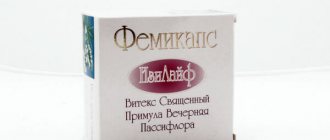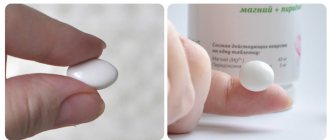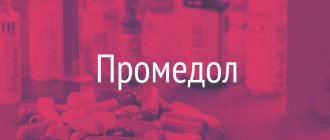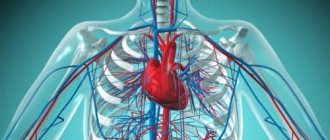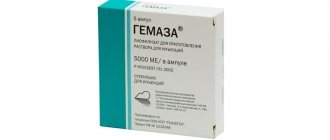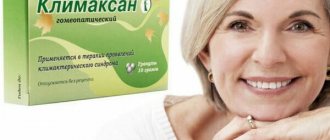Vitamin B1 plays an important role in the functioning of the human body. In recent years, doctors have seen a disappointing picture: the number of cases where a certain group of patients have to be artificially administered this substance is gradually increasing. Such patients are most often prescribed a special drug - Thiamine hydrochloride.
Thiamine, like any other drug, requires caution. And in order not to cause harm, this substance must be administered exactly following the instructions.
Release form and composition
Dosage form - solution for intramuscular (IM) administration: liquid with a transparent structure, slightly colored or colorless, with a characteristic faint odor (in ampoules: 1 ml or 2 ml - in a cardboard pack of 10 pcs.; in a contour cell or plastic packaging 5 or 10 pcs., in a cardboard box 1 or 2 packages; 1 ml - in a cardboard tray 5 pcs., in a cardboard box 1 or 2 trays).
1 ml of solution contains:
- active ingredient: thiamine hydrochloride – 25 mg or 50 mg;
- excipients: unithiol (sodium dimercaptopropanesulfonate monohydrate), water for injection.
List of pharmaceutical drugs
The following drugs are sold in pharmacies:
- thiamine solution for intramuscular administration in ampoules, which are placed in cardboard or blister packaging;
- thiamine-Vial in dark glass ampoules;
- liquid substance thiamine hydrochloride;
- thiamine-ECHO;
- tablets for oral administration, coated with a special coating.
Dietary supplements can contain the vitamin both in pure form and with an admixture of other components: pyridoxine, cyanocobalamin. The injection liquid may contain lidocaine, which can make the procedure less painful. All details can be found in the instructions for use of the drug.
Pharmacological properties
Pharmacodynamics
Thiamine - vitamin B1 - is a water-soluble vitamin. It is a coenzyme of enzymes responsible for the regulation of protein and carbohydrate metabolism. Thiamine is characterized by a moderate ganglion-blocking effect and ensures the conduction of nerve impulses at synapses. It also has an antioxidant effect and increases the protection of cell membranes from the toxic effects of peroxidation products.
Pharmacokinetics
When taken orally on an empty stomach, Thiamine is almost completely absorbed from the gastrointestinal tract. Before absorption, it is released from its bound state thanks to digestive enzymes. 15 minutes after administration, vitamin B1 is determined in the blood plasma, and after 30 minutes - in other tissues. In the blood, its concentration remains relatively low, and predominantly free thiamine is found in plasma, and its phosphorus esters are found in leukocytes and erythrocytes.
The substance is distributed throughout all tissues: more than 50% of the administered amount is contained in striated muscles, approximately 40% in internal organs. There is a relative predominance of thiamine concentrations in the liver, skeletal muscles, nervous tissue and myocardium, which is likely due to increased consumption of the compound by these structures.
Vitamin B1 is metabolized in the liver through phosphorylation, forming thiamine diphosphate (cocarboxylase), which has coenzyme activity and plays an important role in the participation of thiamine in fat and carbohydrate metabolism. The drug is excreted through the intestines and kidneys.
Thiamine in food: where is thiamine found?
Plant and animal products contain a complex of various vitamins and minerals, amino acids and other substances. Compiling a list of products that contain vitamin B1 can be continued endlessly.
It is advisable to consume the vitamin in its raw form without heat treatment.
Main products containing vitamin B1 per 100 grams per mg :
- fish (pink salmon – 0.20, salmon – 0.23, chum salmon – 0.33);
- offal (beef liver (0.30) and kidneys (0.39), pork liver - 0.30, chicken liver - 0.50, beef heart - 0.36);
- pork meat – 1.42;
- poultry (partridge – 0.32, duck – 0.31);
- cereals (peas - 0.80, wheat - 0.46, rice - 0.34, beans -0.50, lentils - 0.53);
- nuts (pine nuts – 33.8, peanuts – 0.70, walnuts – 0.38, almonds – 0.25, sunflowers – 1.90)
- mushrooms – 0.38.
The need for vitamin B1 depends on nutrition (qualitative and quantitative components). The predominance of proteins and carbohydrates increases, and the predominance of fats reduces the need for it.
Indications for use
According to the instructions, Thiamine is indicated for vitamin B1 deficiency and hypovitaminosis, as well as as part of complex therapy for the following diseases:
- radiculitis, neuritis, neuralgia;
- paralysis, peripheral paresis;
- decreased secretory and motor functions of the stomach;
- peptic ulcer of the stomach and duodenum;
- atonic constipation;
- intestinal atony;
- anorexia;
- violation of coronary circulation;
- myocardial dystrophy;
- diabetes;
- dermatoses (psoriasis, eczema, lichen planus, neurodermatitis), accompanied by neurotrophic changes and metabolic disorders.
The effect of vitamin B1 on the body
The value of thiamine for the human body is difficult to overestimate, since this organic compound takes an active part in many physiological and biochemical processes. Vitamin B1 is an important part of carbohydrate metabolism and also reduces the effect of pyruvic and lactic acid on the body. An excess of these acids leads to apathy, decreased performance, nervous exhaustion, and the inability to adequately respond to moderate stressful situations. Also, this substance is regarded as a source of energy and vigor.
Thiamine is widely used in the complex treatment of nervous disorders, depression, stressful situations and overwork. In addition to the listed properties, thiamine is an effective means of preventing gallstones and liver diseases. Also, without a regular supply of the daily norm of this organic compound, the process of producing fatty acids necessary for the breakdown of fats is disrupted.
The beneficial properties of vitamin B1 have been noted in dermatology. This substance has a pronounced regenerating, anti-inflammatory and anti-edematous effect.
special instructions
Parenteral administration is recommended only if it is not possible to take the vitamin orally: malabsorption syndrome, conditions before and after surgery, nausea, vomiting.
When using high doses of the drug, it is possible to distort the results of the spectrophotometric method for determining theophylline in blood serum, laboratory tests of urine using the Ehrlich reagent for urobilinogen.
An anaphylactic reaction often develops in patients after intravenous administration of high doses.
Dextrose for Wernicke's encephalopathy should be taken before the administration of Thiamine.
Contraindications, side effects
Before administering Thiamine, make sure there are no contraindications. These include:
- hypervitaminosis of B vitamins;
- individual intolerance to the drug;
- premenopausal period, menopause in women.
One of the side effects is burning and redness where the needle pierced the skin. This reaction is considered normal. To alleviate the condition, the medicine should be injected as deeply as possible into the muscle tissue. But if nausea, vomiting, or allergic reactions on the skin occur, it is necessary to stop treatment and select a high-quality analogue.
Drug interactions
With simultaneous parenteral use of Thiamine with pyridoxine (vitamin B6), the process of converting thiamine hydrochloride into a biologically active form is hampered; with cyanocobalamin (vitamin B12), the risk of an allergic effect of the drug increases, so these combinations are not recommended.
The drug should not be mixed in the same syringe with benzylpenicillin or streptomycin (this causes the destruction of antibiotics), solutions containing sulfites (thiamine hydrochloride completely disintegrates), nicotinic acid (due to the destruction of thiamine).
When combined with phentolamine, suxamethonium iodide, propranolol, hypnotics, sympatholytics (reserpine), their pharmacological activity decreases.
Vitamin B1 is unstable in neutral and alkaline solutions.
Prescribing the drug with citrates, carbonates, copper preparations, and barbiturates is not recommended.
Manifestations of hypovitaminosis
Insufficient intake of thiamine into the body through food leads to the development of negative symptoms that affect the general condition of a person. The following clinical manifestations indicate a chronic lack of vitamin B1:
- Depressive states, sleep disturbances, deterioration of attention and perception.
- Digestive disorders, chronic constipation, increased appetite, nausea, weight loss.
- Loss of coordination of movement, muscle weakness.
- Shortness of breath with minimal physical activity, unmotivated fatigue.
- Disturbances in the thermoregulation process.
- Reduced pain threshold.
Reviews of Thiamine
Reviews of Thiamine vary widely. Doctors note that the administration of the drug gives good results in the treatment of alcohol dependence, accompanied by withdrawal syndrome, neuritis, encephalopathy, as well as in the prevention of the pathogenetic effect. The advantages of Thiamine are its low price and wide scope of application in psychology and psychiatry. However, the effect of treatment does not appear immediately: for a sustainable improvement in the condition, it is necessary to undergo at least 2-3 courses of therapy.
The formation of infiltrates, especially in elderly patients, manifestations of individual intolerance reactions and allergic responses (itching, skin rashes) are also possible.
Patients note that Thiamine helps to cope with severe back pain and improves tolerance to intense physical activity, helping to restore the body after training. Moreover, the drug has no toxic properties, does not impair liver function and is quickly eliminated from the body. It is believed that vitamin B1 improves immunity, but some patients claim that its administration had no effect on their condition.
Directions for use and dosage
Thiamine solution is administered deeply intramuscularly.
It is recommended to start administering the drug with small doses (no more than 0.5 ml). If vitamin B1 is well tolerated, the dose can be increased.
Adult patients are prescribed a 5% solution. The recommended dose is 0.5–1 ml (corresponding to 25–50 mg of thiamine) once a day daily. The duration of treatment is from 10 to 30 injections.
For children, a solution of 2.5% concentration is used. The recommended dose is 0.5 ml (12.5 mg of thiamine) once a day.
Pharmacodynamics and pharmacokinetics
Thiamine is a synthetic analogue of vitamin B1 with good water solubility. Inside the body, during the process of phosphorylation, the substance is converted into cocarboxylase , a coenzyme of most enzymatic reactions.
According to the pharmacopoeia, Thiamine Chloride, Thiamine Bromide, Thiamine Vial, Thiamine Hydrochloride are all trade names and analogues of vitamin B1. These medications are available as white crystalline powder, capsules, tablets, or solution.
They usually have a weak specific odor, are highly soluble in water, are resistant to acidic solutions, but are easily destroyed when exposed to alkaline and neutral environments.
Parenteral administration of drugs allows it to quickly penetrate the blood and be distributed fairly evenly throughout the body.
Phosphorylation of the substance occurs in the liver area. Accumulation of the vitamin is noted in the heart, liver, kidneys, brain and spleen. The main substance is excreted by the liver and kidneys.
Vitamin B1 or Thiamine is necessary for complete carbohydrate, protein and fat metabolism, normal functioning of the nervous, digestive, endocrine and cardiovascular systems.
Thiamine Mononitrate - what is it?
Thiamine Mononitrate has low hygroscopicity, but is highly resistant to external factors. Therefore, it is actively used in the process of fortification of various food products.
Recommended consumption
The table lists the current RDA values for thiamine. DRI is the average daily intake level sufficient to meet the nutrient requirements of almost all (97–98%) healthy people.
*Adequate intake levels (AI) for thiamine have been established for infants from birth to 12 months, which are equivalent to the average thiamine intake of breastfed infants.

